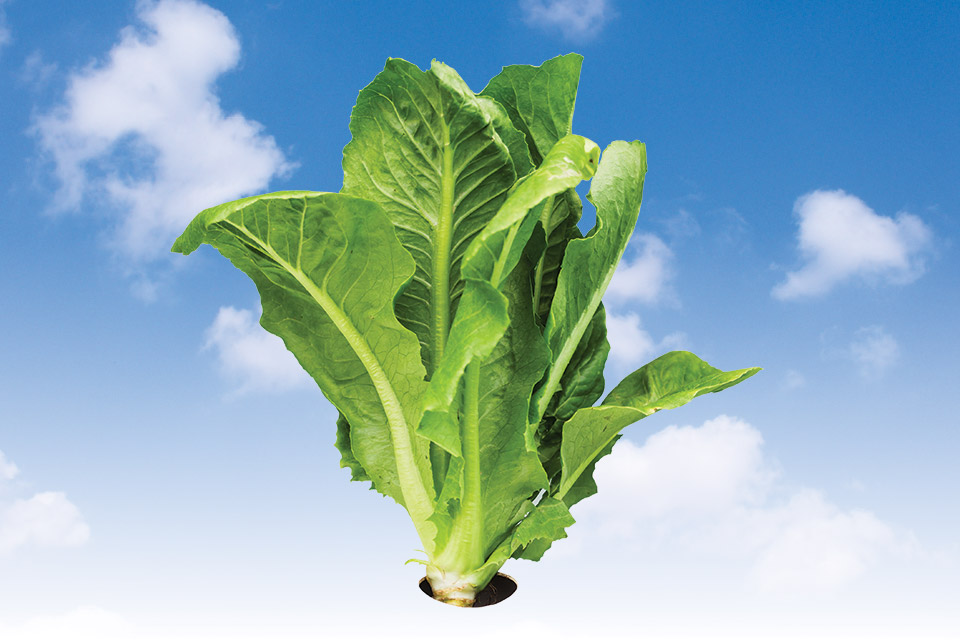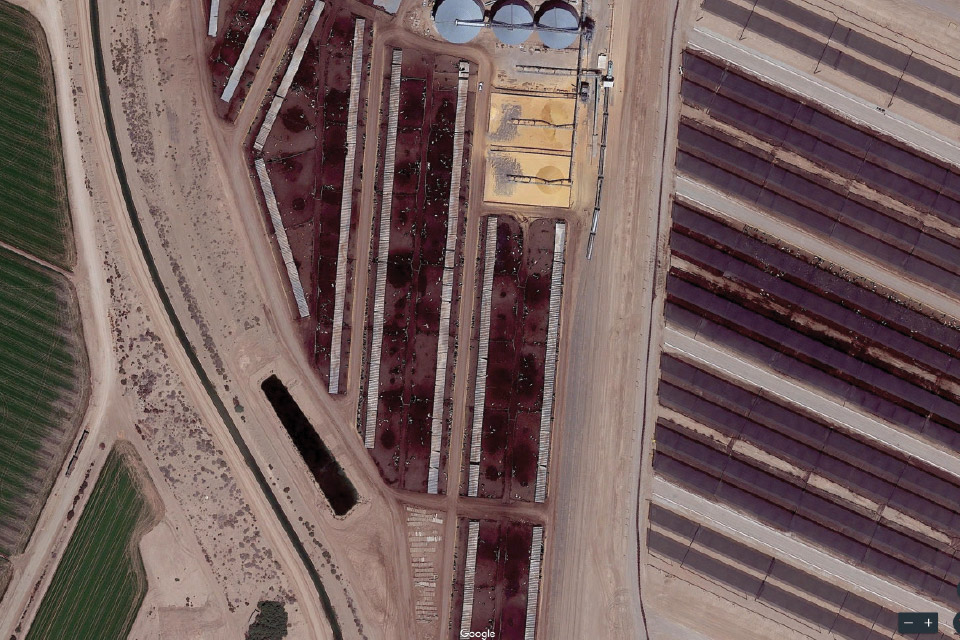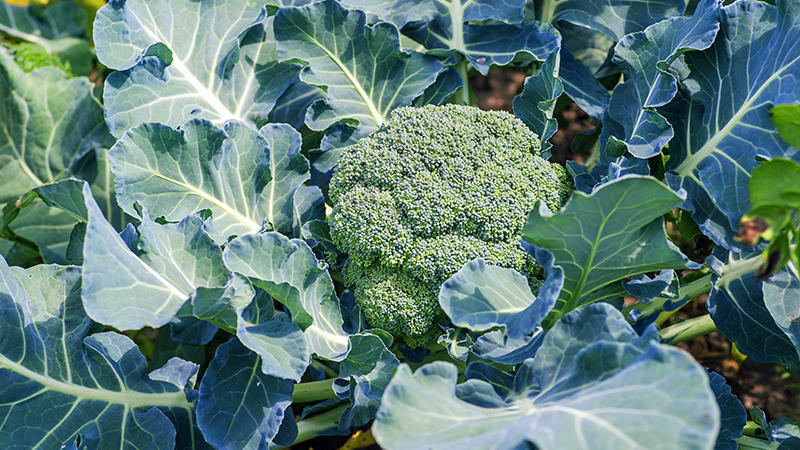A Mission to End All Foodborne Illness Outbreaks
 After the deadly Yuma-AZ-linked E. coli outbreak (and now the new outbreak originating in the Central Coast of California), the leafy green industry faced a seemingly impossible task. How could it prevent another outbreak in the future when previous attempts failed?
After the deadly Yuma-AZ-linked E. coli outbreak (and now the new outbreak originating in the Central Coast of California), the leafy green industry faced a seemingly impossible task. How could it prevent another outbreak in the future when previous attempts failed?
More than 10 years ago, after a similar devastating outbreak in spinach, it raised food safety practices to unprecedented levels and embraced what would become the Food Safety Modernization Act (FSMA).
Despite those extensive changes, the U.S. had 28 outbreaks of the same deadly pathogen — Shiga-toxin producing E. coli (STEC) — linked to leafy greens between 2009 and 2017.
Then this year, the U.S. had a string of romaine-related outbreaks, two linked to STEC, and one to the parasite Cyclosporiasis. In all, seven people died and almost 800 people fell ill. To the FDA, previous precautions were clearly not enough.
So what can the leafy green industry do now to address food safety that it hasn’t already put in place?
Both the leafy green industry and the government agencies (FDA, Centers for Disease Control (CDC), and state level equivalents) created tasks forces to examine the issue thoroughly, each creating a list of recommendations.
We Don’t Know the Source
We’ll get to the recommendations in a moment. First, let’s take a look at a key impediment facing both task forces.
After extensive interviews, studies conducted, and all the samples taken, no one knows where the contamination started.
And that uncertainty is more common than the public realizes.
“FDA shared with us some historical information that shows, disappointingly, that more often than not investigators are not able to nail down the source of contamination,” says Jennifer McEntire, M.D., Vice President of Food Safety and Technology, United Fresh. “We saw that this winter, and it’s immensely frustrating, since it becomes difficult to make changes or raise awareness around issues that impact public health.”
At one point, it looked like the CDC and FDA had found the source. The team found a genetically identical E. coli O157:H7 strain in a major irrigation canal that provided water to many ranches. And a large cattle feedlot is adjacent to that canal. FDA speculates that the fields could have been contaminated by the canal water when used to mix with crop protection sprays or with sprinklers.
But what at first seems like the key to the outbreak’s source unravels upon closer examination.
First, romaine is not the only leafy green grown alongside the canal. Baby spinach and other lettuce crops were in the field, irrigated by the same water.
Also, FDA and CDC took the samples weeks after the contamination took place. So we cannot know if the STEC pathogens entered the canal first or became contaminated later.
Another disconnect is no one could find the STEC strain on the suspected feed lot in question.

This Google Earth view of the cattle feedlot illustrates an issue Yuma growers face. The narrow channel shown here to the left is an irrigation canal that supplies multiple ranches water.
New Theory for Infections’ Cause
Based on University of Arizona research it funded, Leafy Greens Marketing Agreement (LGMA) suspects weather patterns played a key role. It’s believed a late frost combined with high winds allowed the crop to be infected.
Romaine is more vascular than the baby leaf and spinach crops. So when the fields suffered a frost, romaine had a stronger physical reaction, with blistered leaves.
High winds accompanied that freeze. The idea is the wind picked up whatever substance was contaminated with the STEC pathogen, and the winds created a type of aerosol, fine particulates of dust tainted with the pathogen, and it blew for miles.
It’s a theory that fits the known elements. But it’s just that — a theory.
Best Guesses Drive Change
Even without definitive answers, the industry has to address the food safety issue.
Everyone involved agrees more research must be done, but current public safety demands action now.
Another factor is consumer confidence. If retailers cannot assure consumers their lettuce is safe to eat, they will stop stocking it in stores. Without a safe product, without a consumer, the leafy green industry doesn’t exist.
To that end, the Arizona LGMA issued a list of improvements its growers will adopt. Its counterpart LGMA in California quickly followed suit, with a few increases in precautions. Retailers are embracing the suggested changes and, in some cases, demanding the most stringent interpretation of the rules.
In early November, FDA released its own set of recommendations. The government recommendations mostly overlap the LGMA ones.
1. Faster Traceback Required
When disease gets into the leafy green food chain, it can be more challenging than any other crop to address due to the crop’s short shelf life. The tainted produce is no longer in the food system when the outbreak is recognized.
Although traceability is already an industry practice, it’s not standardized. That became a particular issue in the Yuma outbreak.
“Our investigation involved collecting documentation from each point in the supply chain to verify the movement of product back to the Yuma area,” Scott Gottlieb, M.D., FDA Commissioner says in a Nov. 1 statement. “Complicating this already large-scale investigation, the majority of the records collected in this investigation were either paper or handwritten.”
Most believe the 2006 E. coli in spinach outbreak gave FSMA the momentum it needed to become law. Blockchain seems poised to get a similar impetus with the Yuma-linked outbreak. That outbreak also led to the Arizona and California LGMAs formation.
Blockchain is a digital accounting system in which everyone in the supply chain, from the field to the point of sale (grocery story, restaurant, etc.) are on the same system instead of each entity having its own record keeping. The records travel with the produce, with each player in the supply chain adding its data.
The biggest clue that blockchain will become a produce industry standard is that Walmart is committing to it. It’s requiring its produce suppliers to participate, and with the outbreak, its leafy green suppliers must comply much more quickly.
Large growers will need to use Walmart’s blockchain vendor, IBM Food Trust, by January 2019, says Ramesh Gopinath, Vice President of Blockchain Solutions at IBM. All leafy green suppliers, no matter their size, will need to be compliant by September 2019, he says.
For larger growers, changing to blockchain will not be much of an issue.
“Traceability is pretty good on the grower end, it’s already required,” says Jeremy Vanderzyl, Director of Food Safety for Duncan Family Farms, based in Buckeye, AZ. Vanderzyl participated in the Arizona LGMA task force.
Technically, no particular traceability system is being named. LGMA’s specific recommendation reads:
“Metrics language will require the identification of all lot data from product that is placed into commerce. In practice, most firms do collect this data, but this change would remove any potential for not collecting data that would assist in traceback investigations or recalls.”
But with IBM Food Trust and Walmart taking the stand they’re taking, the odds are in its favor for dominating the industry’s traceability systems.
2. Stronger Livestock Contamination Buffers
Since a large feedlot is adjacent to the Yuma irrigation canal that contained the E. coli strain that was a genetic match to the outbreak’s pathogen, LGMA and FDA are taking steps to prevent future feedlot contamination.
The official term for this type of livestock business: concentrated animal feeding operations (CAFO).
Previously, food safety rules required a 400-foot buffer between growing fields and the edge of any property adjacent to CAFOs. LGMA’s new recommendations are to triple that number to a minimum of 1,200 feet.
The California LGMA added another layer to the mandatory buffer zones. If the CAFO has more than 80,000 head of livestock, the buffer will be 1 mile.
3. Test Water Sources More Thoroughly
Part of the new buffer requirement includes changes to surface water use.
“The LGMA already requires extensive testing of all water sources used on leafy greens farms,” says Scott Horsfall, CEO of California LGMA. “In addition, we’ve added to our metrics a treatment requirement for some surface waters (those that pass within 400 feet of a very large CAFO), which will add a layer of assurance to the quality of water used on the farm.”
Vanderzyl says it will require growers to change the way they think. Growers must begin looking at what happens not just on their own ranches.
“We have a water system that carries our water miles and miles. I have a responsibility now to look at the entire water distribution. Do I find anything upstream, outside of my parcel, that I would consider a risk? How can I mitigate that risk?” he asks. “I have to look at my entire region as a whole. I can’t just focus on what’s being delivered to me.”
4. Understand Intense Weather Risks
Growers are well aware the risks floods bring. But the University of Arizona study shows growers should broaden their idea of dangerous weather. Freezes are no longer just a threat to quality; it now should be viewed as increasing your crops’ vulnerability to pathogens. High winds carry dust or water from outside the farm, also making a crop more susceptible to contamination.
After such an event, Vanderzyl says, his team’s immediate next step is to go out to the field and take a look for anything that could increase the risk of contamination. If there is any question the crop has been compromised, it’s time for tissue analysis.
“Go pull 60 points of an acre or two acres, submit it to a lab just to determine if it’s safe,” he says. “I can’t think of a better tool than a pre-harvest tissue test. If you set it up correctly, it’s an incredible way to know your crop is safe.”
5. More Stringent Sanitation
Any strong food safety program emphasizes keeping equipment free of anything that can carry a contamination from one area to another.
“Added prescriptive measures for the frequency and timing of cleaning and sanitizing of harvest equipment has been included in these updates and allows for further verification of these practices,” the LGMA press release says.
More Research a Must
One of the most frustrating parts of this particular outbreak is not being able to definitely identify its cause. We have educated theories only. And yet the industry is making wide-scale changes.
“People want action, but it needs to be science based,” Vanderzyl says.
Take the setback rule.
Some studies have been done on how much of a buffer is needed, but those studies were limited. The new rules of 1,200 feet and a mile aren’t backed up by science.
And that leaves growers on unsteady ground if customers make demands for deeper buffers, or other food safety measures.
If growers and associations cannot cite research showing exactly how deeply particulates will intrude from the border of a property, how can they hold their ground if their customers want, say, a 2-mile setback?
Asking for more than current requirements is already happening.
The California rule suggest the mile buffer only when a CAFO exceeds 80,000 heads. Duncan Family Farms has a property with 500 head of cattle adjacent to one ranch.
“We have our customers coming back to us, saying they want at least a mile even with 500 heads,” Vanderzyl says.
When FDA pointed out the 28 leafy-greens-linked E. coli outbreaks between 2009 and 2017, it also called for a higher standard of food safety for leafy greens. The question now is if customers will demand that all fresh produce categories live up to any new standard that’s set.
Expect a surge of food safety-related research. FDA is calling for the leafy greens industry to ramp up its research investments.
Quality studies take time, something the industry did not have if it was going to address safety issues prior to the Yuma growing season.
With that in mind, the new rules are needed now. A repeat of the terrible year the industry, not to mention consumers, experienced must be avoided at all costs.
“Many of [the above] recommendations — particularly those related to the LGMA Metrics — have now been put into place in time for this winter’s desert production season,” Horsfall says.










